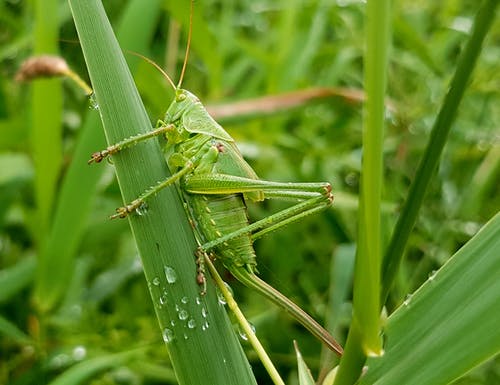You are here
Home 🌿 Recreational Marijuana News 🌿 "Pests can change their behavior, but they can't avoid being eaten" 🌿"Pests can change their behavior, but they can't avoid being eaten"

Greenhouse vegetable and flower growers are always looking for new tools to fight the pests that go after their crops.
Three promising native Canadian predators are now under evaluation at Vineland as part of a project led by Rose Buitenhuis, PhD, Program Leader, Biological Crop Protection. She has been heading the search for new ways to help growers deal with common greenhouse plant pests. Depending on the pest, growers can experience crop losses of 5to 20, and if the pest transmits a plant virus, losses can go as high as 100%.
“Our overall goal is to find new native-to-Canada predators that are generalists and will be a good addition to an Integrated Pest Management (IPM) program in horticulture,” says Buitenhuis. She is currently testing three nabid predator species, collected in the Niagara region, Ontario to determine which one has the greatest potential to control pests in Canadian crops. Nabids are common natural enemies of greenhouse crop pests like aphids, spider mites, thrips, and whiteflies.
Ready-to-go biocontrol packages
Applied Bionomics of British Columbia is Vineland’s principal collaborator in the project. The goal, according to Buitenhuis, is to have a ready-to-go biocontrol package in place by March 2023. Because the work involves native Canadian predators, there is no need for additional regulatory approvals, and, if successful, the impact for growers will be immediate.
This work is part of a larger biocontrol project underway at Vineland. Vineland and Applied Bio-nomics have also partnered to bring to market a predatory mite first discovered in the St. Catharines, Ontario area by a Vineland researcher. This predatory mite was also tested in the first-ever trial on cannabis plants last year in partnership with Niagara College’s Agriculture & Environmental Technologies Innovation Centre.
As part of research in laboratory and greenhouse settings, the three nabid species are being evaluated for their predation rate, which common greenhouse pests they feed on, how well they survive on supplemental food in the greenhouse, and how well they perform in an IPM system with multiple pests.
“We don’t know yet which one will be the best candidate, but the goal is to have one that will meet all of those criteria,” she says.
“For now, they seem pretty similar, so it is difficult to pick.” Specialized biocontrol agents are available for most common greenhouse crop pests. A versatile generalist predator would be a good addition to an IPM system as it would target whichever pest population was most prevalent.
More robust pest control
According to Buitenhuis, this makes pest control more robust and reliable for growers. “More specialist biocontrol agents disappear when there is no pest to feed on, whereas this one will stay around and feed on other pests — that’s why it must play well with others,” she adds. “In biocontrol, you always need multiple beneficial insects working together.”
Vineland is currently the only team comparing all three nabid species together, however, one is being investigated in Quebec as a possible control against tarnished plant bugs in outdoor strawberry production. Agriculture and Agri-Food Canada’s research center in Harrow is also looking at that same species as a potential candidate against future invasive species that may arrive.
“This is a Canadian solution to address problems faced by Canadian growers,” says Buitenhuis, “and we won’t face resistance issues like with pesticides where pests adapt to specific modes of action. Pests can change their behavior, but they can’t avoid being eaten.”
420 Intel is Your Source for Marijuana News
420 Intel Canada is your leading news source for the Canadian cannabis industry. Get the latest updates on Canadian cannabis stocks and developments on how Canada continues to be a major player in the worldwide recreational and medical cannabis industry.
420 Intel Canada is the Canadian Industry news outlet that will keep you updated on how these Canadian developments in recreational and medical marijuana will impact the country and the world. Our commitment is to bring you the most important cannabis news stories from across Canada every day of the week.
Marijuana industry news is a constant endeavor with new developments each day. For marijuana news across the True North, 420 Intel Canada promises to bring you quality, Canadian, cannabis industry news.
You can get 420 Intel news delivered directly to your inbox by signing up for our daily marijuana news, ensuring you’re always kept up to date on the ever-changing cannabis industry. To stay even better informed about marijuana legalization news follow us on Twitter, Facebook and LinkedIn.




